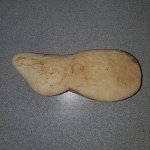secondstar
Hero Member
- Mar 11, 2017
- 790
- 2,940
- Detector(s) used
- XP Deus, Minelab Equinox, Garrett Ace Apex
- Primary Interest:
- Metal Detecting
I’ve been hunting almost exclusively in 25 kHz lately using the X35 coil. With ID Norm set to off, I’ve noticed that nickels fall between 69 - 71 with shotgun shells and pull tabs being “elsewhere.” 25 kHz seems to spread out the mid tones nicely while pushing the high conductors way up into the 90’s. This is great for coin shooting IMHO. Start with Deus Fast and set frequency to 25 kHz. I chose to switch to 4 tones and set the 4th tone break at 93 so that copper and silver coinage really sings to me. I’ve been absolutely killing it using these settings, give it a shot!




